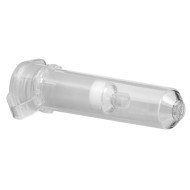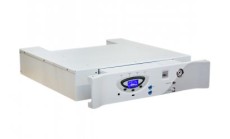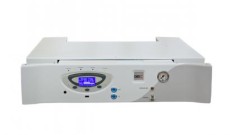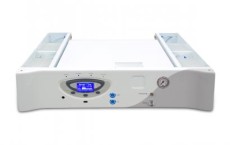
Hydrogen Generator FID Station Plus R-PG 100, 100ml/min
Hydrogen/Air Generators FID Station Plus The FID Station Plus hydrogen and air generators use the new and latest technology of polymer electrolyte membrane (PEM) electrolysis for the production of pure hydrogen.
Product description
Hydrogen/Air Generators FID Station Plus
The FID Station Plus hydrogen and air generators use the new and latest technology of polymer electrolyte membrane (PEM) electrolysis for the production of pure hydrogen. The produced hydrogen is ideal as reagent and carrier gas for:
- Flame ionization detector (FID)
- Nitrogen-Phosphorous detector (NPD)
- Thermal conductivity detector (TCD)
- Hall electrolytic conductivity detector (ELCD)
FID Station Plus generators are available in the usual flows of H2 production up to 1000ml/min with a purity of 99.9999% (R-PG versions) or 99.99999% (R-NM versions). Its horizontal format allows positioning over the laboratory bench but is designed to sit under and support the weight of your GC, optimizing the space you need. Its 17 cm–only-height guarantee the best access to the injectors of any GC in the market. Generators are equipped with an automatic loading of deionized water from a smart internal system tanks that give to the customer a 7 litres of water autonomy. It means that with a FID standard flow, the FID Station Plus can provide up to 7000 litres of H2 before the user refills it. Moreover, the practical system of internal deionizing cartridge replacement greatly simplifies the only maintenance recommended.
The Zero Air generator is also available for all FID Station Plus models. It integrates a filtration system and platinum catalyst that provides 1.5 l/min of Zero Air with a contents of hydrocarbons around 0.5ppm (the oil-free compressor as the compressed air supply is not included).
The FID Station Plus is available in two versions in the same core unit and with the same dimensions:
- H2 Generator
- H2 Generator + Zero Air Generator
Safe and economical hydrogen production
The very limited internal volume (less than 50 ml) allows safe use of the gas generators where the use of cylinders is risky or prohibited. The application of tested safety technologies stops the unit in the event of leaks or malfunctions. Hydrogen gas generators avoid the need for expensive installation of gas pipelines from the cylinder storerooms to the labs,as well as the need to repeatedly change the bottles.
Improved chromatographic results
Hydrogen as a carrier gas is faster and more sensitive than the more expensive helium. Run time savings of 25% to 35% without a decline in resolution. Moreover, the use of hydrogen as a carrier gas allows lower temperature elution, thus extending the life of the chromatograph column.
Easy maintenance
The only maintenance is facilitated by the deionizer bag access system. The system allow to change the deionizer bag without tools or power off the instrument.
Technical specification
| Produced gases | Hydrogen |
| H2 max. flowrate | 100 ml/min |
| H2 purity | 99.9999% |
| H2 pressure | 1–160 psig / 0.1–11 barg |
| H2 drying | Static cooling dryer |
| Membrane | Polymer electrolyte membrane (PEM) |
| Water storage | Internal water tank, 7l, autorefill |
| Water quality | Deionized or demineralized (<2uS) |
| Internal H2 volume | < 50 ml at max pressure |
| H2 output connection | to stainless‐steel or copper Swagelok fitting and 1/8” tubing |
| Cascading of H2 outputs | Yes (up to 32 units) |
| Operating temperature | 15 to 40°C |
| Operating humidity | 0‐90%, non condensing |
| Power | 110–120 60 Hz/220–240 50 Hz |
| Dimensions (WxHxD) | 150×690×680mm |
| Weight | From 30 to 40kg |
| Tested weight support | 80Kg |
Parameters
| Brand: | EasyFlash C18 |
| Category: | Laboratory instruments and accessories / Chromatography / Gas Generators |
Use
| Max. flowrate | 0.1l/min |
| Gas generated | H2 |
- Show all







Micro Spin SpeExtra MSPE C18-P column with 0.22 µm PVDF membrane, 15 mg, 0.7 ml, 50 pcs
Availability: ask uson inquiry





 0
0
 0
0




